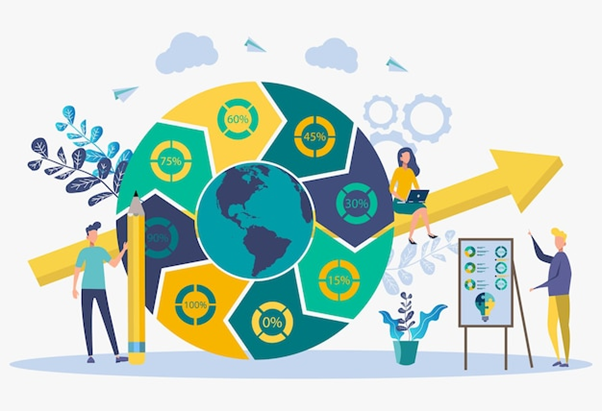You are here
- Home
- Blogs
- Anonymous's blog
- In search of hybridity and ecosystems: a front level practice perspective
In search of hybridity and ecosystems: a front level practice perspective

Source: 5 Simple Ways to Show Your Support for Essential Workers - OAAPN website
In a series of blogs over summer 2023, Carol Jacklin-Jarvis and Steven Parker from the Centre for Voluntary Sector Leadership reflect on current theory and practice for multi-agency collaboration.
In this third blog, Carol and Steve explore the perspective from the front-line.
As researchers with similar backgrounds in social work - we often share professional experiences about collaborative working across agency boundaries to improve outcomes for children and families. This includes comparing insights from both successful and unsuccessful collaborations, as we continue to learn from research observations and conversations with practitioners to understand how they navigate and interpret their own experiences of collaboration.
As we discuss our earlier careers, we reflect on how organisations seemed to be changing in relation to the boundary between third and public sectors. A third sector organization might run a ‘drop in’ in the local council offices with staff members then employed by the council. However, it was unclear why they were no longer an independent service. Although we didn’t recognise it at the time, on reflection we can see how the fuzzy boundary between providers was shifting. Recently, scholars have started to use the terms hybridity and ecosystem, in addition to established collaboration terminology. Below, we reflect on the meaning of hybridity and ecosystems for practitioners and conclude by asking what this means for children and families.
Working for hybrid organisations

Source: Hybrid work: How it affects flexibility, work-life balance & wellbeing (limeade.com)
Academics have long suggested that organisations delivering public services take on characteristics and practices of organisations from other sectors (Billis 2010; Skelcher and Smith 2014). Public sector service delivery has adopted practices from business, whilst also blurring boundaries with third sector organisations so that services are experienced as joined-up, with no visible gap for users to navigate. Practitioners find themselves working for somewhat different organisations from those they signed up to earlier in their career, as services are ‘spun out’ from the public sector; or operate in third or private sectors under contract from the public sector (Hebson et al. 2003; Maddocks and Myers 2016). Working in public services no longer equates to working in the public sector. Library services in England provide an interesting example, with a mixed economy of services run by public agencies, third sector organisations, social enterprises, co-operatives and volunteer community groups. Each of these organisational contexts has implications for those working on the front-line, in terms of differences in accountability, employment practice and day-to-day management.
Working in the ecosystem

Source: Business ecosystem Vectors & Illustrations for Free Download | Freepik
Another way to understand such complexities is to conceptualise public service delivery as increasingly happening within broad ecosystems of collaborating organisations. Public service ecosystems have been described as combining complex public service delivery and value creation at societal, service and personal levels (Petrescu 2019; Osborne 2022). The impression is of a collaboration ‘bubble’ with partners working harmoniously.
This would suggest that what matters for front-line practice is not primarily organisational context, but rather the context provided by inter-organisational processes across the ecosystem. This is an attractive idea that holds out the possibility of focusing on getting things done, rather than worrying about organisational priorities and internal process.
When the authors were employed in integrated children’s services, they worked in teams that included education, social care, third sector and private sector employees. To have the opportunity to engage and learn from others was invaluable, with opportunities to think and act creatively at eco-system level. However, this is not to say that organisational priorities, interests and ways of working disappeared. There were frequent debates about the management of team members with different qualifications and terms and conditions; and about processes of decision-making and resource allocation. These debates had real implications in terms of pay, workload and resources, and were at times petty and divisive (Sullivan and Williams 2012). Moreover, when working in teams to deliver change across the eco-system, differences in professional practice could undermine objectives.
In one example from children’s services, a multi-agency team was tasked with achieving targets to reduce teenage pregnancies, until one team member challenged the underlying concept that teenage parenting was necessarily a ‘bad’ thing. Rather than addressing the central issue, the team member was gradually side-lined. As collaboration theory tells us, differences between collaborators are an important resource for the team, enabling them to do more than each could on their own (Vangen 2017). However, to achieve change across an eco-system assumes there is some shared understanding about the necessity for that change. This requires mature, inclusive debate across the constituent parts of an ecosystem, something that is rarely achieved – or at least that rarely reaches the front-line. Indeed, in ecosystems there are always tensions, misunderstandings, and even turf-wars between professionals which can sometimes undermine the outcomes we are trying to achieve (Engen et al. 2020).
So, what does this all mean for children and families?
What would we have thought about this when we were practitioners? Our earlier selves would have asked what does adopting the concept and language of hybrid organisations and public service ecosystems mean for us and our service users. As others have noted (see for example Cameron 2016; Vangen 2017), arguments for multi-agency collaboration are many and varied, but critically include the notion that collaborative services should provide a better experience for users. In terms of the ‘metaphors of collaboration’ (see blog 2), the aim is for services to be experienced as ‘joined-up’, ‘seamless’, as a convenient ‘one-stop-shop’, or a welcoming ‘hub’. Potentially, the metaphors of hybridity and ecosystem may encourage practitioners to minimise attention on organisational differences and limit their negative impact on service users, but we have not yet seen evidence of this from research. Finally, and crucially, we suggest that it is essential that any adoption of the ecosystem idea takes full account of the significance of the valuable contribution of family and community ecosystems to the public service ecosystem.
References
- Billis, D. 2010. Towards a theory of hybrid organizations. In Hybrid organizations and the third sector (pp. 46-69). Palgrave, London.
- Cameron, A. 2016. What have we learnt about joint working between health and social care? Public Money & Management, 36, 1, 7-14.
- Hebson, G., Grimshaw, D. and Marchington, M., 2003. PPPs and the changing public sector ethos: case-study evidence from the health and local authority sectors. Work, employment and society, 17, 3, 481-501.
- Maddocks, J. and J. Myers. 2016. Public Service Ethos: the Blending Values of Public and Mutual Organisations. (LSE Blog).
- Osborne, S.P., Powell, M., Cui, T. and Strokosch, K. 2022. Value creation in the public service ecosystem: An integrative framework. Public Administration Review, 82, 4, 634-645.
- Petrescu, M. 2019. From marketing to public value: towards a theory of public service ecosystems, Public Management Review, 21, 11, 1733-1752.
- Skelcher, C. and Smith, S.R. 2015. Theorizing hybridity: Institutional logics, complex organizations, and actor identities: The case of nonprofits. Public Administration, 93, 2, 433-448.
- Sullivan, H. and Williams, P., 2012. Whose kettle? Exploring the role of objects in managing and mediating the boundaries of integration in health and social care. Journal of Health Organization and Management, 26, 6, 697-712.
- Vangen, S. 2017. Developing practice-oriented theory on collaboration: a paradox perspective. Public Administration Review, 7, 2, 263-272.
7th August 2023


